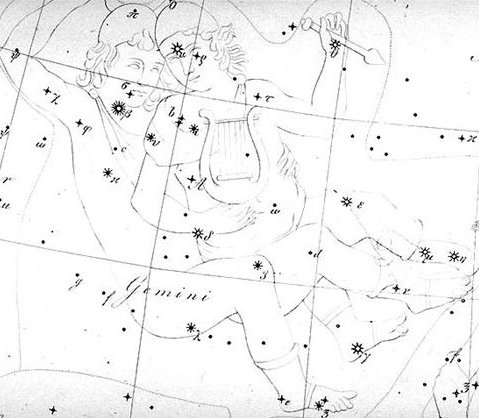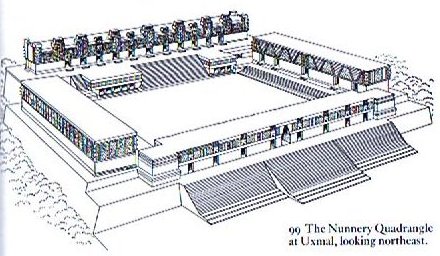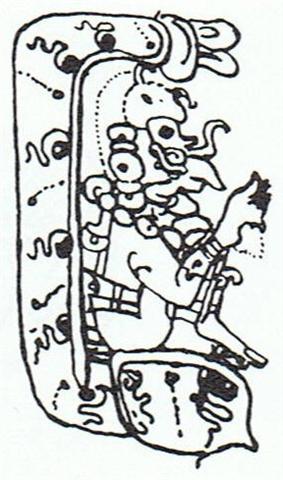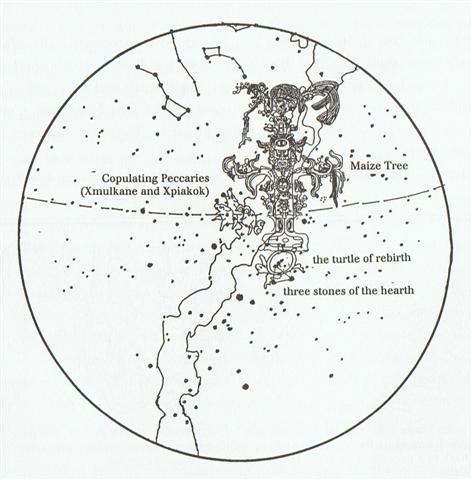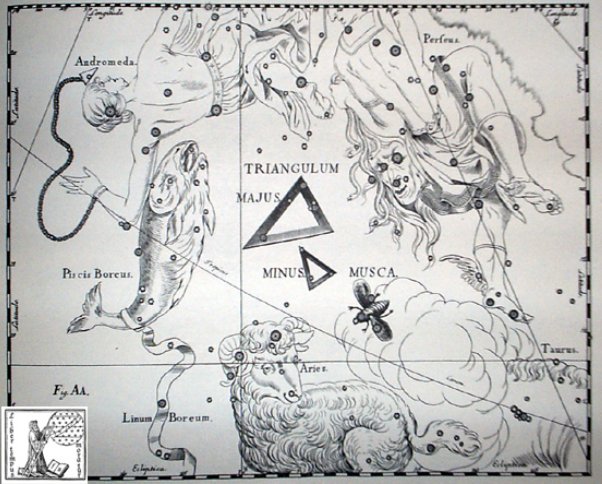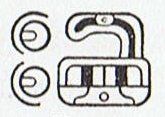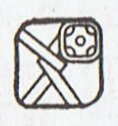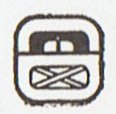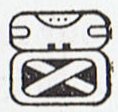If the creator of the G text regarded the beginning of side a of the G tablet as coinciding with where once upon a time the ancient star map ought to have had its origin at the northern spring equinox (according to the modern view = at 0h), then the taro glyph (Ga2-29) would have been located 59 days later and in July 22 (22 / 7 = π). March 21 (80) + 59 = 139 (May 19). Together with Ga2-27 (also alluding to π) the date Maro 10 (according to Manuscript E) would be in the center of attention and this is where the Explorers went from their canoe left on the beach and up into the interior of the island - uta in contrast to tai - carrying (uta) their provisions. Land was beginning here and the first 'king' (ariki motongi) in the list was given as ko Oto Uta, the king which corresponded to Adam - the colour 'Red' if understood as a version of the Semitic Edom (cfr The White Goddess, p. 164).
Rei in Ga2-27 was at heliacal χ Gemini - i.e. close to ω Cancri as if hinting at a transplantation of the right hand of Pollux up onto 'land' = the Earth Turtle = Cancer:
... An iconographic study by Jeff Kowalski suggests a cosmological layout for the Nunnery:
The higher placement of the North Building, with its 13 exterior doorways (reflecting the 13 layers of heaven), and the celestial serpents surmounting the huts identify it with the celestial sphere. The iconography of the West Building, with 7 exterior doorways (7 is the mystic number of the earth's surface), and figures of Pawahtun - the earth god as a turtle - indicate this to be the Middleworld, the place of the sun's descent into the Underworld. The East Building has mosaic elements reflecting the old war cult of Teotihuacan, where tradition had it that the sun was born; thus, this may also be Middleworld, the place of the rising sun. Finally, the South Building has 9 exterior doorways (the Underworld or Xibalba had 9 layers), and has the lowest placement in the compex; it thus seems to be associated with death and the nether regions ... On Easter Island August was the month for planting plants above the ground and September the month for planting plants below the ground, a sequence of events which we can recognize from that of the Rain God - i.e. as regarded from north of the equator when in September the Sun went down to the southern hemisphere:
It appears as if the enigmatic Ga2-26 was meant to correspond to day 136 at the time of the Bull. At the time of rongorongo May 16 (136) was the position of heliacal Alcyone in the Pleiades. ... another Alcyone, daughter of Pleione, 'Queen of Sailing', by the oak-hero Atlas, was the mystical leader of the seven Pleiads. The heliacal rising of the Pleiads in May marked the beginning of the navigational year; their setting marked its end when (as Pliny notices in a passage about the halcyon) a remarkably cold North wind blows ... But between the time of the Bull and that of rongorongo there evidently had been a forward shift in the positions of the months in the calendar: ... there was no real difference between ºMarch and MAY. They represented the same month in the time-space defined from the stars and therefore the year should in principle have only 10 months. The creator of the G text has placed 2 'outside' months at the end of side b - from JANUARY 19 (384) to MARCH 21 (445):
In other words, the Explorers spent 152 (= 6³ - 4³) - 115 = 37 days out at Sea (from Vaitu Nui 25 to Maro 1) before they made Landfall and these 37 days could have been equated with the precessional distance from the time of Bharani (*41) and up to the time of Gregory XIII (*4). It surely was a Sign and it was probably intended to let the reader know that the structure of the Gregorian calendar was used. The distribution of right ascension days should follow the Gregorian calendar and the dates be defined accordingly. ... The Ship of Noah had a cube of 6 as regarded from the outside. Its inside measure could have been 4 * 4 * 4 = 64, in which case we could count: 6³ - 4³ = 216 - 64 = 152 for its dry timbers ...
Therefore there had to be a jump with 2 months (inserted in Roman times) in order to let MAY 14 (Ga2-24) now be day 134 counted from JANUARY 1 instead of the earlier day 3-14 (a reshuffle of the digits from 314 to 134). And therefore, by taking care of the 4 precessional days from the time of Gregory XIII and up to the time of rongorongo, the 'donation' by Pollux at φ Gemini (*118 = 472 / 4) should have originated from the date "MARCH 14 (3-14).
So Kuukuu (alias Mars) - was probably representing Agru (Aries):
In principle he should have worked the earth in early spring, in March. Maro in Manuscript E can therefore be understood as alluding to the time of Bharani (the place for birth), when "June would have corresponded not to the 6th dry earth month but to the 4th and fruitful month, to our April. As regarded from north of the equator. April 1 (4-1, as if alluding to 41 Arietis, the star Bharani) was day 91 (= 364 / 4) according to our modern view of the Gregorian calendar. Counted from the earlier view with the last day of December at the beginning it had been day 92 (= 91 + 1).
Below I have illustrated what could have been intended - as a preliminary explanation of why Kuukuu apparently laboured in the wrong month:
The Bright Fire at glyph 61 fits nicely with my suggested 0h for "MARCH 21 and with the design of the glyph. There should consequently be added 61 days in order to jump from the time of the Bull to the corresponding time implied by Manuscript E. *41 + 61 + 80 = 182 = 364 / 2. The inserted new months July + August measured 62 days, but the first of them could have corresponded to the last day of December. Manuscript E and the text on the G tablet seem to agree and possibly there was a common tradition. Or the creators of Manuscript E had read and memorized the G text. Alternatively, a calendar jump with 61 days could have been well known throughout the ancient world. If we should count with the last day of December as the beginning of the next year, then 1 + 3 * 20 = 61:
|
||||||||||||||||||||||||||||||||||||||||||||||||||||||||||||||||||||||||||||||||||||||||||||||||||||||||||||||||||||||||||||||||||||||||||||||||||||||||||||||||||||||||||||||||||||||||||||||||||||||||||||||||||||||||||||||||||||||||||||||||||||||||||||||||||||||||||||||||||||||||||||||||||||||||||||||||||||||||||||||||||||||||||||||||||||||||||||||||||||||||||||||||||||||||||||||||||||||||||||||||||||||||||||||||||||||||||||||||||||||||

